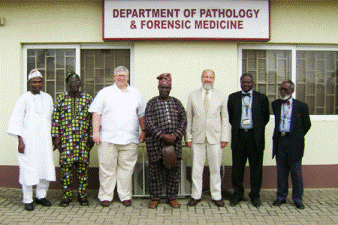Natural Resources, School of

Karl Reinhard Publications
Document Type
Article
Date of this Version
1-16-2025
Citation
https://doi.org/10.1101/2025.01.14.632942
Abstract
Analysis of ancient desiccated feces – termed paleofeces or coprolites – can unlock insights into the lives of ancient people. We collected desiccated feces from caves in the Rio Zape Valley in Mexico (725-920 CE). First, we extracted DNA with methods previously optimized for paleofeces. Then, we applied highly sensitive modern molecular tools (i.e., PCR pre-amplification followed by multi-parallel qPCR) to assess the presence of 30 enteric pathogens. We detected ≥1 pathogen associated gene in each of the ten samples and a mean of 3.9 pathogens per sample. The targets detected included Blastocystis spp. (n=7), atypical enteropathogenic E. coli (n=7), Enterobius vermicularis (n=6), Entamoeba spp. (n=5), enterotoxigenic E. coli (n=5), Shigella spp./enteroinvasive E. coli (n=3), Giardia spp. (n=2), and E. coli O157:H7 (n=1). The protozoan pathogens we detected (i.e., Giardia spp. and Entamoeba spp.) have been previously detected in paleofeces via enzyme-linked immunoassay (ELISA), but have not via PCR. This work represents the first detection of Blastocystis spp. atypical enteropathogenic E. coli enterotoxigenic E. coli, Shigella spp./enteroinvasive E. coli, and E. coli O157:H7 in paleofeces. These results suggest that sensitive modern molecular tools, such as PCR, can be used to evaluate ancient materials for genes of interest.
Included in
Archaeological Anthropology Commons, Ecology and Evolutionary Biology Commons, Environmental Public Health Commons, Other Public Health Commons, Parasitology Commons


Comments
Open access.